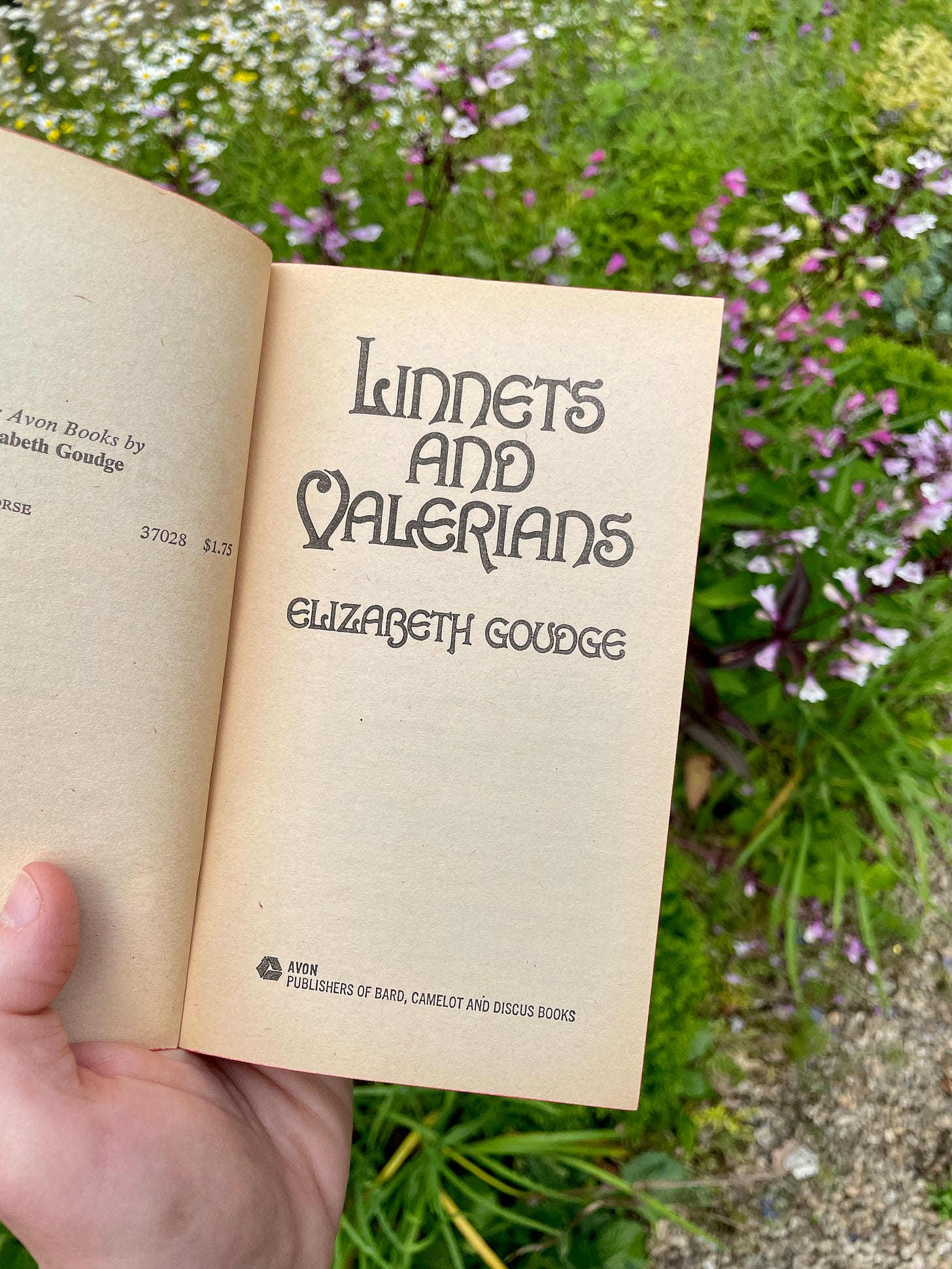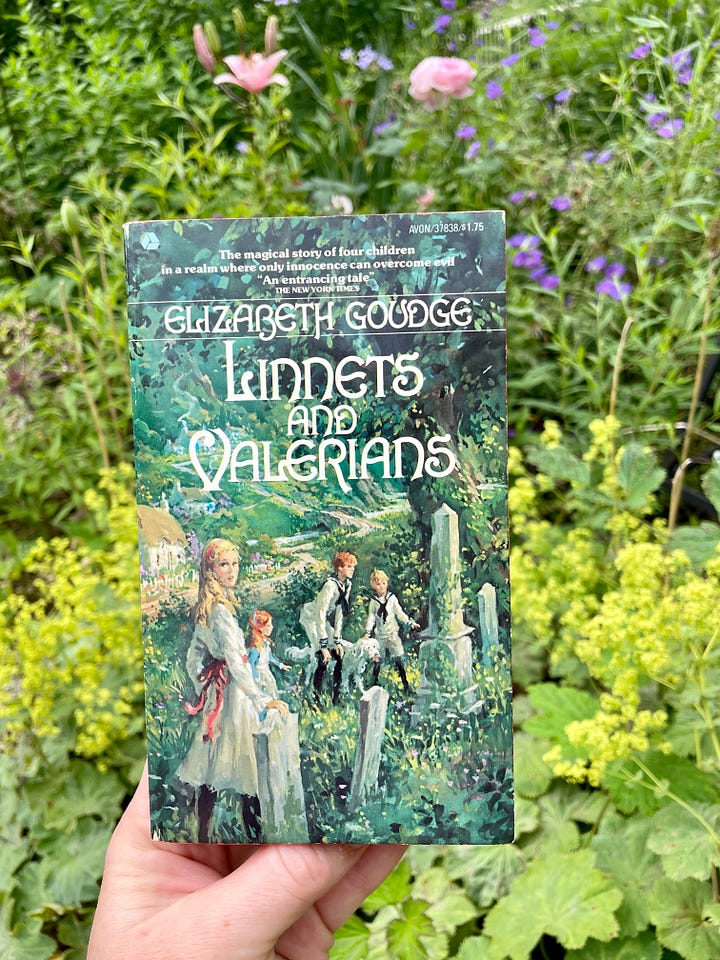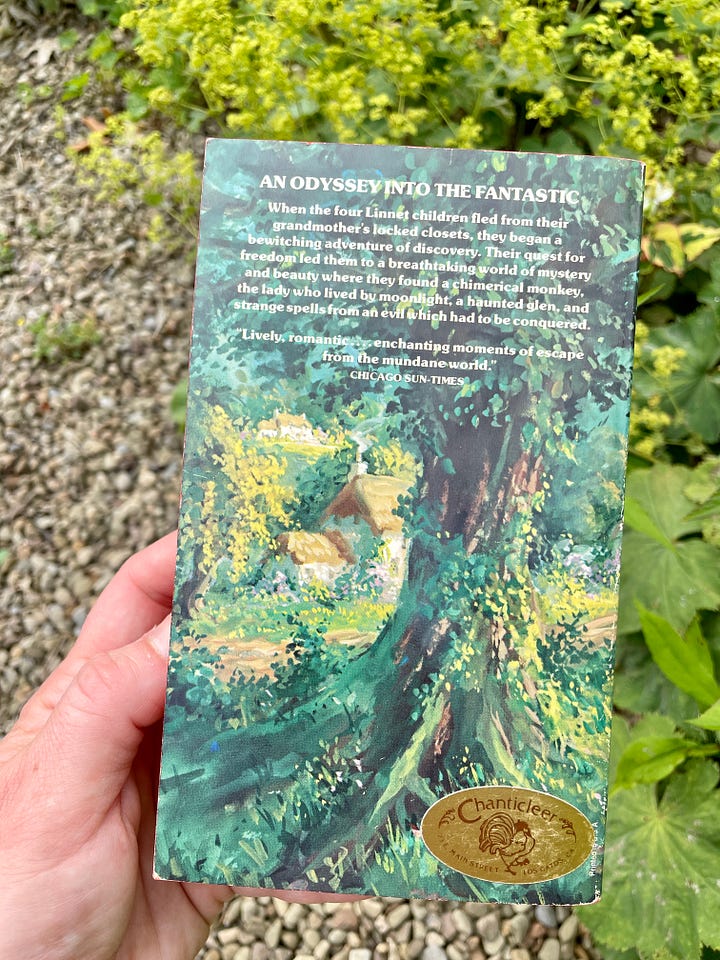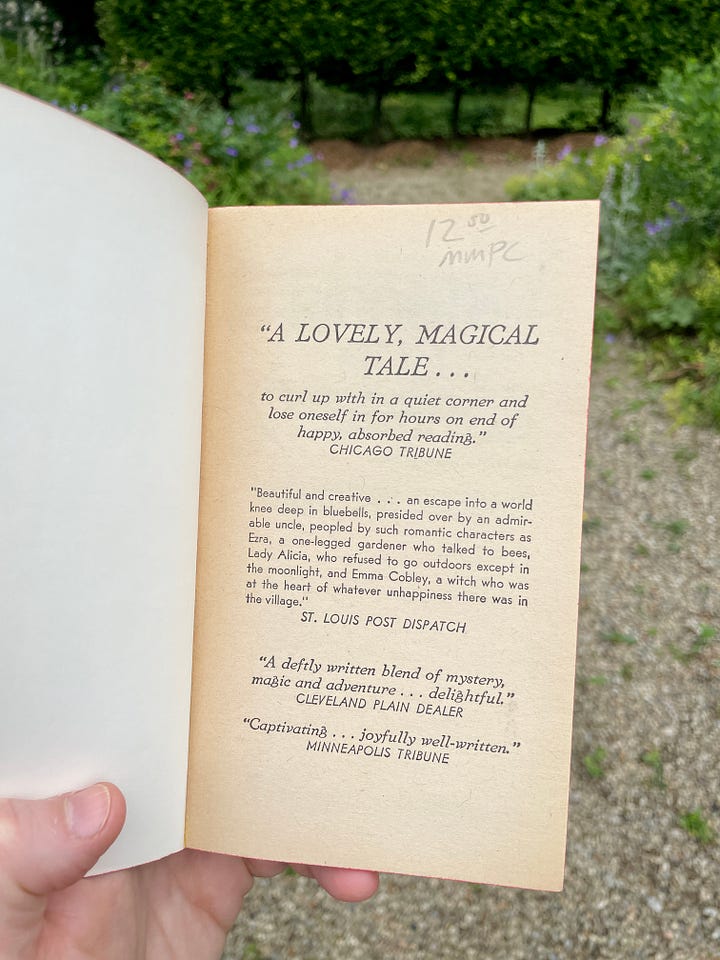
“People often ask a writer how a particular book came to be written. Linnets and Valerians is the result of leaning on a gate for twelve years. Although I did not lean on the gate all of the day of those 4,380 days I seldom missed leaning on it for part of each day.
It was only a short walk from the cottage where I lived and from it, looking across a wide valley, I could see Dartmoor rising up in the distance. Sometimes the hills were grape purple, sometimes blue or silver, and in winter they were often covered with snow. When the gales came they roared over the crests of those hills, and the light warm wind that brought the first white violets and periwinkles into bloom came from the same place, and so they seemed the home of all that was magical.”1
Elizabeth Goudge, about Linnet & Valerians in 1967
Welcome to our Goudge Readalong of her last children’s book, Linnets & Valerians!
The above origin story for Linnets & Valerians was written a few years after its initial publication for a new edition by Knight Books. When Goudge went to write her last children’s book, she was living at Rose Cottage in Oxfordshire, but the magical scenery of Devon came back to her.
Returning to Devon in her dreams
It is interested that most of Goudge’s children’s books are set in her beloved West Country! We just finished reading The Little White Horse, but even the Henrietta books are also set in the West Country, though further to the northeast in Somerset.
Goudge wrote in her interview ‘West Country Magic’ in The Horn Book Magazine in March 1947:
“Just opposite the cottage where I live there is a steep bank covered with periwinkles which bloom all the year round, but in spring are like a cloak of blue over the bank. A very little old flight of stone steps leads up the bank to a little stile at the top. When you have climbed the steps and the stile you find yourself in a meadow.”2
She also added to this same interview that from this periwinkle bank:
“You look west to wild Dartmoor, purple and blue on the horizon, and east to the sea. To the south there is a tall hill called Beacon Hill, where in the days of the Napoleonic wars the sentry stood watching for invasion, and where in 1940 the sentry stood once again watching for invasion. One day I want to write a fairy story about the periwinkle bank, the steps and the little stile. For they have magic in them.”3

Here are a few more views of the Avon edition:




Setting: Magical Devon
In her autobiography, The Joy of the Snow, Goudge shared her love for the magic of Devon:
Keep reading with a 7-day free trial
Subscribe to Elizabeth Goudge Bookclub’s Substack to keep reading this post and get 7 days of free access to the full post archives.




